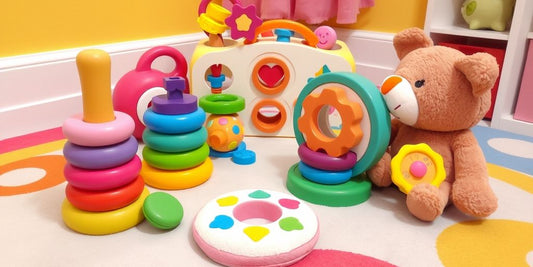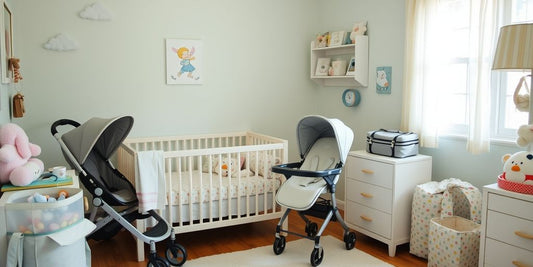Babyproofing your home is a crucial step to ensure the safety of your little one. As babies grow, they become more curious and start exploring their surroundings, which can lead to potential hazards. By taking the time to babyproof each room, you can create a safe environment for your child to play and learn. This article will guide you through the best practices for babyproofing your home, covering essential tools and supplies, and specific tips for different areas of the house.
Key Takeaways
- Use safety gates to block off dangerous areas like stairs and kitchens.
- Cover electrical outlets and manage cords to prevent shocks and strangulation.
- Anchor heavy furniture to the wall to prevent tipping accidents.
- Store hazardous materials like cleaning supplies and medications out of reach.
- Create safe play areas with soft flooring and secure toys.
Essential Babyproofing Tools and Supplies
When it comes to babyproofing your home, having the right tools and supplies is crucial. These items can help prevent accidents and keep your little one safe. Here are some essential babyproofing tools and supplies you should consider:
Babyproofing the Living Room

Securing Heavy Furniture and Electronics
To keep your baby safe, start by anchoring heavy furniture and electronics to the wall. This prevents them from tipping over if your baby tries to climb on them. Use anti-tip kits for items like bookshelves and TVs. Also, consider moving smaller items like lamps and decorations out of your baby's reach.
Covering Sharp Corners and Edges
Sharp corners and edges on furniture can be dangerous for a crawling or walking baby. Add stick-on corner guards to tables and other furniture with pointed edges. You might also want to look into furniture with rounded corners or soft ottomans that can double as tables.
Managing Cords and Outlets
Cords and outlets are common hazards in the living room. Use childproof outlet covers to prevent your baby from sticking their fingers or objects into electrical sockets. For window blinds, switch to cordless options to avoid strangulation risks. If cordless blinds aren't an option, use safety wraps to keep cords out of reach.
Creating Safe Play Areas
Designate a specific area in the living room as a safe play zone for your baby. Use soft mats or rugs to cushion any falls. Make sure this area is free from small objects that could be choking hazards. Consider using safety gates to section off this area, keeping your baby away from potential dangers like stairs or fireplaces.
Kitchen Safety for Babies
Storing Hazardous Materials Safely
It's important to keep cleaning products and other dangerous items out of reach. Store these materials high up or in cabinets with childproof locks. Avoid transferring cleaning products into other containers that aren't properly labeled, as this can be confusing and dangerous for young children.
Using Stove Guards and Appliance Locks
To prevent your baby from turning on the stove, use stove-knob covers. Appliance locks can also be used to keep little hands from opening ovens, microwaves, and refrigerators. This is especially important once your baby can climb and reach higher surfaces.
Securing Cabinets and Drawers
Childproof cabinet locks and drawer locks are essential for keeping harmful items out of reach. Magnetic locks are a good option as they can be mounted inside cabinets, offering safety without damaging the wood. This is a key step in baby proofing cabinets.
High Chair Safety Tips
Always use the safety straps on high chairs to prevent falls. Make sure the high chair is stable and cannot be easily tipped over. Regularly check for any wear and tear that could compromise the safety of the high chair.
Keeping your kitchen safe for your baby involves a combination of proper storage, using safety devices, and constant vigilance. By taking these steps, you can create a safer environment for your little one to explore.
Making the Nursery Safe
Creating a safe nursery is crucial for your baby's well-being. Here are some essential tips to ensure your nursery is a secure and comfortable space for your little one.
Choosing Safe Furniture and Decor
When selecting furniture, use sturdy furniture that meets U.S. safety standards. Avoid placing heavy items like bookshelves near the crib. Instead, opt for dressers with detachable toppers that can grow with your child. For decor, avoid hanging anything directly over the crib or changing table that your baby could pull down. Consider painting an accent wall or using wall decals instead.
Crib Safety Guidelines
Ensure that the crib is away from windows, cords, and heavy furniture that could pose a risk. The crib mattress should fit snugly with no gaps, and the slats should be no more than 2 3/8 inches apart. Remove any soft bedding, pillows, or toys from the crib to prevent suffocation hazards.
Organizing Toys and Supplies
Store toys in a safe toy box, ideally an open bin, as boxes with heavy lids can be dangerous. Regularly check toys for any small parts that could be choking hazards. Keep frequently used items within easy reach to avoid the need to climb or stretch.
Monitoring Temperature and Air Quality
Maintain a comfortable room temperature and use a thermometer to monitor it. Ensure proper ventilation and consider using an air purifier to keep the air clean. Regularly check for any signs of mold or mildew, and address them promptly.
Continually reassess your child's environment as they grow and develop new skills. This helps ensure that the nursery remains a safe space for your baby.
Bathroom and Laundry Room Precautions
Storing Medications and Cleaning Supplies
Bathrooms and laundry rooms often house medications and cleaning supplies that can be dangerous for babies. Always store these items out of reach, preferably in high cabinets or locked storage. Remember, even child-resistant packaging isn't foolproof, so it's best to keep these items completely inaccessible.
Using Toilet Locks and Non-Slip Mats
To prevent accidents, install toilet locks to keep curious toddlers from playing in the toilet. Additionally, place non-slip mats in the bathtub to avoid falls during bath time. These simple steps can make a big difference in keeping your child safe.
Preventing Drowning Hazards
Babies can drown in just a few inches of water, so never leave them unattended in the bathroom. Always supervise bath time and empty bathtubs immediately after use. Consider using a thermometer to ensure the bathwater is at a safe temperature.
Managing Electrical Appliances
Keep electrical appliances like hairdryers and electric razors stored away when not in use. Water and electricity are a dangerous mix, so make sure these items are out of reach and unplugged. This is especially important in a room where water is frequently used.
Regularly reassess your bathroom and laundry room for potential hazards as your child grows and becomes more mobile.
Outdoor Babyproofing Tips

Ensuring your outdoor spaces are safe for your baby is just as important as indoor babyproofing. Here are some essential tips to keep your little one safe while enjoying the outdoors.
Securing Pools and Water Features
Always secure pools and water features with proper fencing and gates. Ensure the fence is at least four feet high and has a self-latching gate. Consider using pool alarms to alert you if someone enters the pool area unexpectedly.
Creating Safe Play Areas
Designate a specific area in your yard for your baby to play. Use soft ground coverings like grass or rubber mats to cushion falls. Regularly inspect play equipment for any damage or wear and tear.
Managing Outdoor Furniture and Tools
Store all garden tools, chemicals, and other hazardous items in a locked shed or garage. Ensure outdoor furniture is stable and free of sharp edges. Anchor large items like grills and patio sets to prevent tipping.
Protecting Against Insects and Sun Exposure
Use baby-safe insect repellent and sunscreen to protect your baby from bites and sunburn. Dress your baby in lightweight, long-sleeved clothing and a wide-brimmed hat. Always provide plenty of shade and keep your baby hydrated.
Regularly check your outdoor spaces for potential hazards and make adjustments as your baby grows and becomes more mobile.
Conclusion
Babyproofing your home is a crucial step to ensure your child's safety as they grow and explore. By taking the time to secure furniture, cover sharp edges, lock cabinets, and make other necessary adjustments, you can create a safer environment for your little one. Remember, babyproofing is an ongoing process. As your child develops new skills and becomes more mobile, reassess your home to address new potential hazards. Trust your instincts and stay vigilant. Your efforts will provide peace of mind and a safer space for your child to thrive.
Frequently Asked Questions
When should I start babyproofing my home?
It's best to start babyproofing before your baby begins to crawl, usually around 6 months old. This way, you'll be prepared as soon as they become mobile.
What are the most important areas to babyproof in the living room?
In the living room, focus on securing heavy furniture and electronics, covering sharp corners and edges, managing cords and outlets, and creating safe play areas.
How can I ensure my kitchen is safe for my baby?
Store hazardous materials out of reach, use stove guards and appliance locks, secure cabinets and drawers, and follow high chair safety tips to keep your kitchen safe for your baby.
What should I consider when babyproofing the nursery?
Choose safe furniture and decor, follow crib safety guidelines, organize toys and supplies properly, and monitor the temperature and air quality in the nursery.
How do I make my bathroom and laundry room safe for my baby?
Store medications and cleaning supplies securely, use toilet locks and non-slip mats, prevent drowning hazards, and manage electrical appliances safely.
What steps should I take to babyproof my outdoor space?
Secure pools and water features, create safe play areas, manage outdoor furniture and tools, and protect against insects and sun exposure to make your outdoor space safe for your baby.









